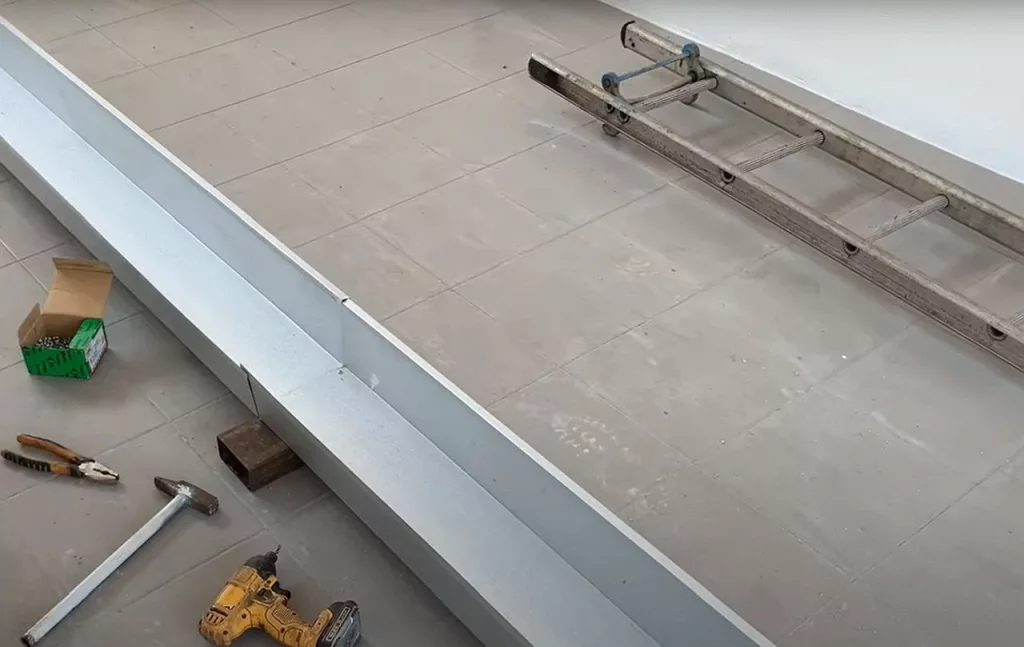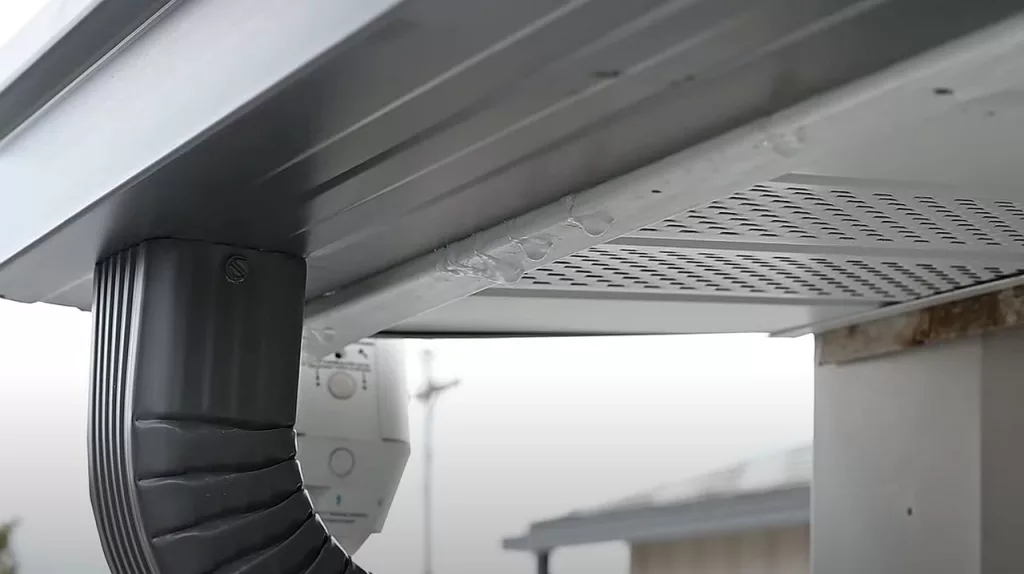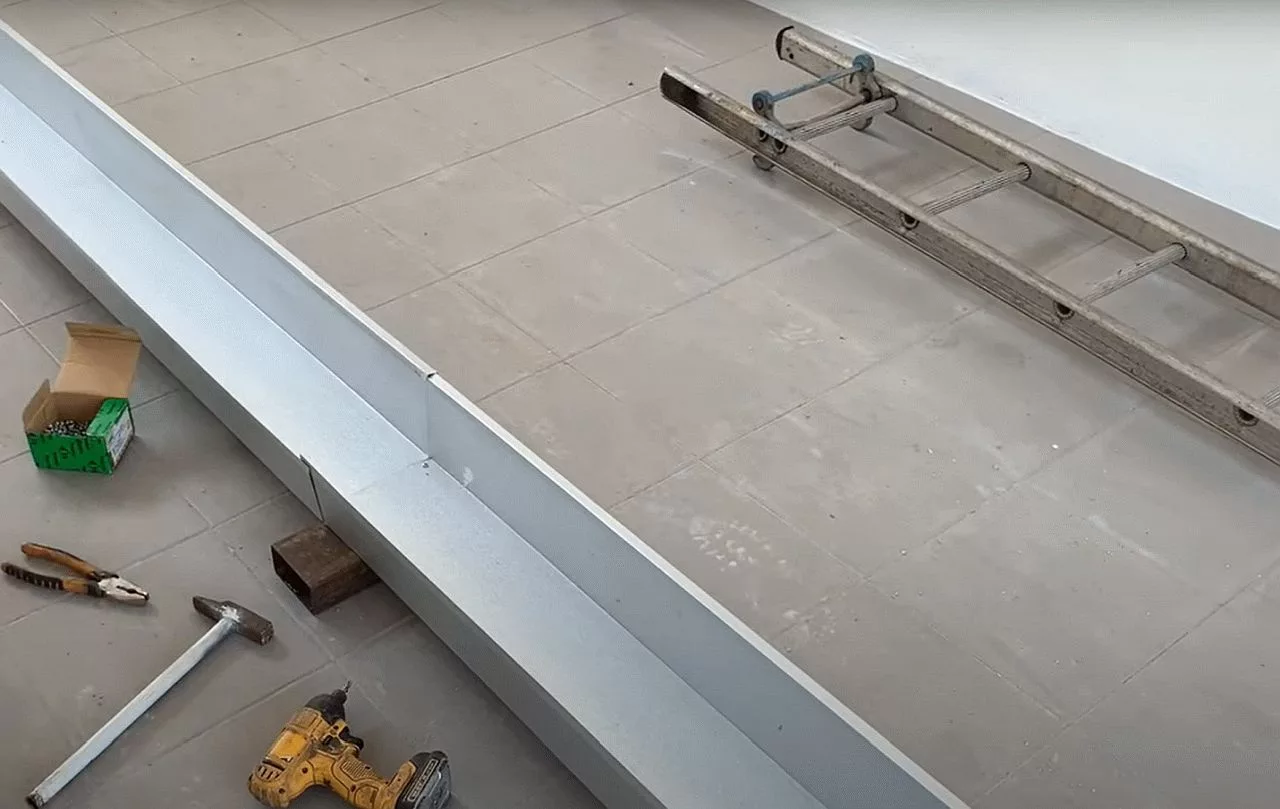Last Updated on: 6th September 2023, 08:06 am
What is the amount of rain that your beloved roof has to endure? In the U. S., the average home can collect up to 600 gallons of water for every inch of rainfall. That’s lot of water that could result damaging your dear home if not propelry channeled away. Your rain gutters are here to collect and divert water away from the home, preventing water damage, soil erosion. And a host of other problems.
But remember that not all gutters are created equal. There are various types of gutters, each with its own set of pros and cons. From k-style gutters to half-round gutters, the choicse can be overwhelming. So, let’s break it down, shall we?
Table of Contents
- Why Do You Even Need Gutters?
- What Are the Basic Types of Gutters?
- Why K-Style Gutters?
- Why Choose Half-Round Gutters?
- Copper Gutters: A Stylish Choice?
- Vinyl Gutters: Are They Worth It?
- Galvanized Steel Gutters: Strong but Rusty?
- Sectional vs. Seamless Gutters: What’s Difference?
- Box Gutters: A Hidden Gem?
- How to Choose Right Gutter Material and Style?
- What’s The Most Common Type of Gutter?
- What’s the Standard Gutter Size?
- What’s the Most Durable Gutter Material?
- What We Have Learned?
Why Do You Even Need Gutters?
So, you’re probably wondering, “Why do I even need gutters?” Well, gutters are like drainage system of your home. They catch rainwater from the roof and channel it away from the foundation. Without them, you’re watching potential water damage, soil erosion, and even basemnet flooding. Not fun, right?
But wait, there’s more. Gutters also protect your dear home’s exterior, like siding and the fascia boards. They help prevent water from seeping into the walls and causing mold or rot. Well, yeah, gutters are big deal. Don’t undeerstimate ’em.

What Are the Basic Types of Gutters?
Alright, let’s get into meat of it. As for types of gutters, you’ve got a few options. The most ppoular types are k-style gutters and half-round gutters. But there are also box gutters, fascia gutters. And even custom styles that mimic crown molding. Each type of gutter has its own set of advantages and disadvantages, so it’s all about finding what works best for you.
And the material is another thing to consider. You’ve got aluminum gutters, galvanized steel gutters, copper gutters, and even vinyl gutters. Each materail has its own pros and cons, like durability, cost. And upkeep. So, keep that in mind when making your choice.
Why K-Style Gutters?
K-style gutters, ladies and gentlemen, are most common type of gutter out there. They’re named “K-style” because of their shape, which kinda resembles the letter “K”. These gutters are trendy because they can hold more water and are less likely to bend or protrude when filled with debris. They’re also easier to install. This means expert installaiton won’t cost you an arm and a leg.
But here’s the downside: K-style gutters can be prone to clogging if you don’t install a gutter guard. Leaves, twigs, and other debris can easily get stuck, causing water to overflow. Well, if you’re going for k-style gutters, consiedr adding a gutter guard for extra protection.
Why Choose Half-Round Gutters?
Half-round gutters are exactly what teyh sound like: gutters that are half circle. These gutters are frequently found on older, histoirc homes. They’re less common than k-style gutters but have certain aesthetic appeal. Plus, their smooth shape makes them less likely to clog, which is a huge win in my book.
However, half-round gutters can be bit more expensive to install. They require special hangers and are generally not a DIY installation project. So, if you’ re considering half-round gutters, be prepraed for extra cost.
Copper Gutters: A Stylish Choice?
Yes, copper gutters. These are crème de la crème of gutters, my friends. They’ re incredibly durable and develop a beautfiul patina over time. If you’re looking to add a touch of elegance to your home, copper gutters are way to go.
But elegance comes at price. Copper gutters are significantly more expensive than other gutter materials. Plus, they require professional installation, adding to the overlal cost. Well, if you’re on a budget, copper gutters might not be best option for you.
Trending Now:
Vinyl Gutters: Are They Worth It?
Vinyl gutters are a popular choice for DIY installation. They’ re lightweight, easy to install. And also don’t rust or corrode. Sounds great, right? But hold your horses. Vinyl gtuters are not as durable as other materials, especially in extreme weather conditions.
Over time, vinyl gutters can crack and break, especially in colder climates. So, while they may be a cost-effective option upfront, you might end up spendign more on repairs and replacements in the long run.
Galvanized Steel Gutters: Strong but Rusty?
Galvanized steel gutters are robust and durable, no doubt about it. They can withstand extreme weather conidtions and are less likely to dent or bend. But here’s catch: they’re prone to rust. Over time, galvanized steel gutters will start to corrode, affecting their performance and appearance.
If you’ re considering galvanized steel gutters, make sure to weigh pros and cons. They might be strong. But they’re not invincible.

Sectional vs. Seamless Gutters: What’s Difference?
Sectional gutters come in pieces and are joined together during installation. Seamless gutters, on the other hand, are made from a single piece of material. So. This is better? Well, seamless gutters are less likely to leak because they have fewer joints. But they’re also more expensive and require expert installation.
Sectional gutters are easier to install and are a trendy choice for DIY projects. But they’re more prone to leaks at the joints. Well, it’s a trade-off. Choose wisely.
Box Gutters: A Hidden Gem?
Box gutters are a bit of a hidden gem. They’re built into roof structure, making them less visible than other types of gutters. This gives your home cleaner, more streamlined look. But box guttesr are not without their drawbacks.
Because they’re built into roof, box gutters are more challenging to replace and repair. They’re also more prone to leaks because they’re harder to access for rgeular maintenance. So, if you’re considering box gutters, be sure to weigh pros and cons.
How to Choose Right Gutter Material and Style?
Choosing the right gutter material and style can be a bit overwhelming. But don’t worry, I’ve got your back. First, consider your budget. Aluimnum gutters and vinyl gutters are generally more affordable, while copper gutters and stainless steel gutters are on the pricier side.
Next, think about climate. If you live in an area with extreme weather conditions, you’ll want to go for more durable materials like glavanized steel or copper. And don’t forget about care. Some materials require more upkeep than others, so make sure to factor that in.
What’s The Most Common Type of Gutter?
So, what’s most prevalent type of gutter? Drumroll, please… It’s k-style gutter! These gutters are popular for a reason. They’re versatile, easy to install, and can handle great amount of water. Plus, they come in variosu materials, making it easy to find one that fits your needs and budget.
But popularity doesn’t always mean it’s the best option for you. Make sure to consider your home’s specfiic needs and your own preferences before making a choice. After all, the most common type isn’t always the best type for every situation.
What’s the Standard Gutter Size?
As for the gutter size, the standard is usually 5 inches for residential homes and 6 inches for commercial buildings. But here’s the thing: the size you need dpeends on size of your roof and amount of rainfall your area receives. In some cases, larger gutters might be necessary to handle the water flow.
So, how do you solve the right size? Well, you can consult with prfoessional or use online calculators to get an estimate. Just remember, the size is measured in linear feet, so you’ll need to measure perimeter of your dear roof to get an accurate estimate.

What’s the Most Durable Gutter Material?
If durability is what you’re after, then stainless steel gutters and copper guttesr are your best bet. These materials are incredibly resistant to rust and corrosion, making them ideal for long-term use. Plus, they can withstand extreme weather conditions, from heavy rain to snow and ice.
But keep in mind, durability comes at a cost. Stainless steel and copper gutters are more expensive than other materials like aulminum and vinyl. Well, if you’re willing to invest in durability, be prepared to pay a premium.
What We Have Learned?
Ladies and gentlemen, we’ve covered lot of ground today. From the importance of gutters to various types and materials, I hope this guide has been helpful. Remember, choosing the right gutter for your dear home is paramount for preventing water damage and maintaining the structural integrity of your home. So, take your time, weigh the pros and cons. And also make an inforemd decision.
And if you’re still curious about all things gutter-related, why not dive deeper? There’s always more to learn, and I’m here to guide you every step of the way.
